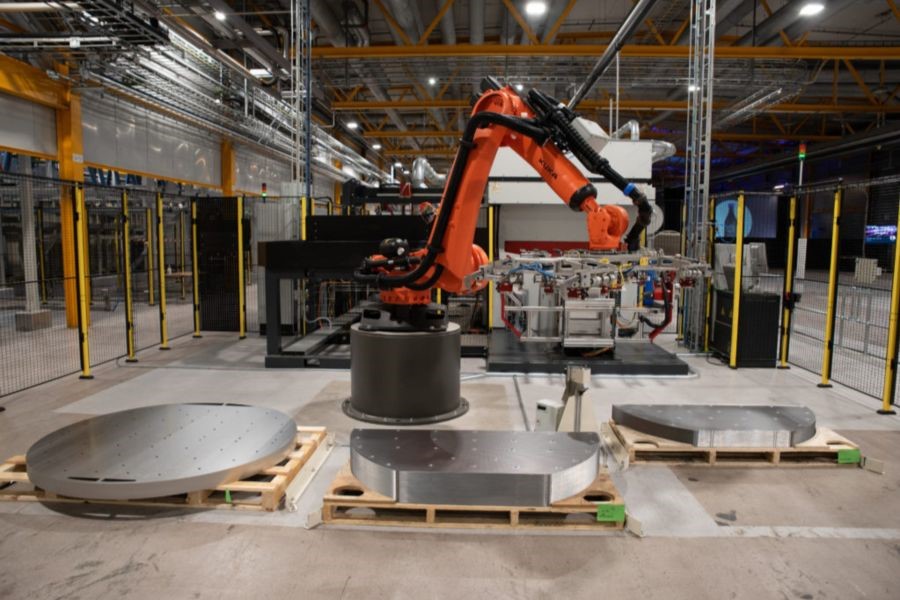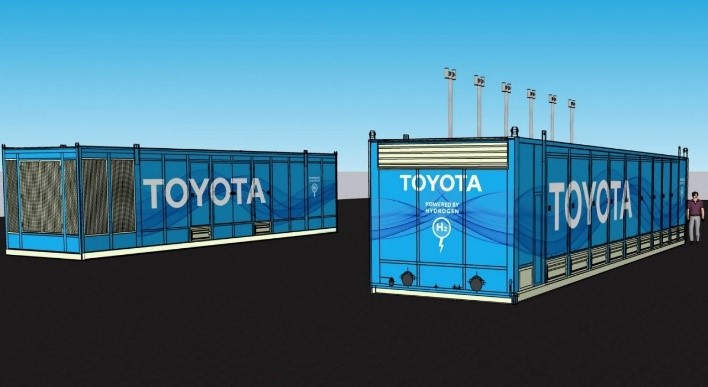Nel to build second production line at HerØya, doubling capacity to 1 GW
Nel will build a new fully automated production line at HerØya in Norway, doubling its capacity for production of alkaline electrolyzer stacks to ~1 GW. The new line is expected to be in operation from April 2024. Total capex commitment for equipment will be around EUR 35 million.

Nel’s facility at HerØya is the world’s first fully automated electrolyzer manufacturing factory, and was officially opened by Norwegian Energy Minister Terje Lien Aasland, in April this year. The factory is currently running on three shifts and is setting weekly production records. Towards year end, the company expect to have five shifts running. While the current production capacity is 500 MW, it can be expanded to 2 GW, which will also generate a significant amount of new direct and indirect workplaces in the area around HerØya and Porsgrunn, Norway.
The expansion means that Nel is strengthening its position as a global frontrunner for development and industrialization of green hydrogen technology and provides Norway with a great opportunity to take on the role as the leading exporter of electrolyzer equipment to a rapidly growing market.
Bosch Announced Investment of More Than $200 Million to Produce Fuel Cell Stacks in Anderson, South Carolina
Fuel cells make all-electric operation of large vehicles for long trips a reality. Bosch, a longtime leader in powertrain and propulsion technologies, announced that it will also produce fuel cell stacks in its Anderson, South Carolina, facility as part of a more than $200 million investment expected to create at least 350 new jobs by the start of production in 2026.
As part of Bosch’s local for local manufacturing strategy, the fuel cell stacks produced in Anderson will drive hydrogen-powered trucks coming to the roads of the U.S. in the next few years. A fuel cell operates by using hydrogen to generate electrical energy.
Toyota, NREL to work on 1 MW PEM fuel cell power generation system
Toyota Motor North America and U.S. Department of Energy's (DOE's) National Renewable Energy Laboratory (NREL) are collaborating to build, install and evaluate an advanced 1 MW proton exchange membrane (PEM) fuel cell power generation system at NREL's Flatirons Campus in Arvada, Colorado.

This new system is at a significantly larger scale, generating about 15 times more power and capable of direct current and alternating current output, according to Toyota. The company is leveraging its 25 years of fuel cell development experience for the designing of the system, expanding its hold beyond automotive fuel cell market.
Toyota is providing the fuel cell modules, while Telios is working as system integrator for the design and build of the system for delivery to NREL. The company has developed an integrated control system to manage operation of the fuel cell modules to maximize efficiency and system life. The system demonstrates a simplified design as a drop-in replacement to a conventional generator.
The fuel cell generator is part of the Advanced Research on Integrated Energy Systems (ARIES) megawatt-scale hydrogen system being designed and commissioned at NREL's Flatirons Campus. The flexible system that includes a 1.25-MW PEM electrolyzer, 600-kg hydrogen storage system and 1-MW fuel cell generator provides a platform to demonstrate direct renewable hydrogen production, energy storage, power production and grid integration at the megawatt scale.
Hyundai Unveils First Hydrogen Fuel-Cell Electric Truck For Hylane
Hyundai has announced that its first hydrogen commercial vehicles for Hylane have arrived in Germany. Hylane is a subsidiary of German insurance company DEVK and will use the trucks to begin a partnership with Hyundai.
The arrival of these hydrogen trucks marks a milestone in the history of German mobility as the trucks have the potential to decarbonize heavy road transport.
This is a historic moment. Following the successful launch of the Hyundai XCIENT fuel cell truck in Switzerland, we are expanding our activities in Europe and focusing initially on Germany," Hyundai hydrogen mobility CEO Beat Hirschi says.
Sinohytec achieved1H2022 revenue of 269 million yuan up 129% same period
On August 29, Sinohytec, the first hydrogen fuel cell system stock on the science and technology board, released its 2022 semi-annual report. The financial report showed that the company achieved operating revenue of RMB 26,914.28 million from January to June 2022, an increase of 128.53% year-on-year; achieved net profit attributable to shareholders of the listed company of RMB -60,308.5 million, a decrease of RMB 42,585.4 million compared with the same period of the previous year; net cash flow from operating activities of RMB -22,723.5 million compared with the same period of the previous year The net cash flow from operating activities was - RMB22,723,500, an increase of RMB84,248,800 compared with the same period of the previous year.
With the implementation of China's fuel cell vehicle demonstration application city cluster policy, the domestic fuel cell industry made rapid development in the first half of the year. Data from the China Association of Automobile Manufacturers showed that 1,390 fuel cell vehicles were sold from January to June in 2022, and 1,586 vehicles were sold in the whole year of 2021, with sales in the first half of 2022 alone reaching 87.64% of last year's annual sales.
Against this backdrop, Sinohytec also achieved significant growth in operating income in the first half of the year. At the same time, the Company gradually increased the recovery of accounts receivable. The company's sales recovery continued to improve in the first half of the year, with cash received from sales of goods and services increased by RMB14,497.26 million year-on-year, and the net cash flow from the company's operating activities increased by RMB84,248.8 million year-on-year.
In terms of net profit, the year-on-year decrease in the Company's net profit in the first half of the year was mainly due to the Company's continued introduction of professionals in various fields and the salary structure adjustment implemented in the second half of last year, resulting in a significant year-on-year increase in the Company's labour cost expenses; secondly, with the rapid development of the domestic fuel cell industry, some of the older models of fuel cell products and materials, were no longer able to meet the market demand, for which the Company made the necessary Secondly, with the rapid development of the domestic fuel cell industry, some of the older models of fuel cell products and materials are no longer able to meet the market demand, and the Company has made necessary impairment charges to strengthen the quality of the Company's assets.